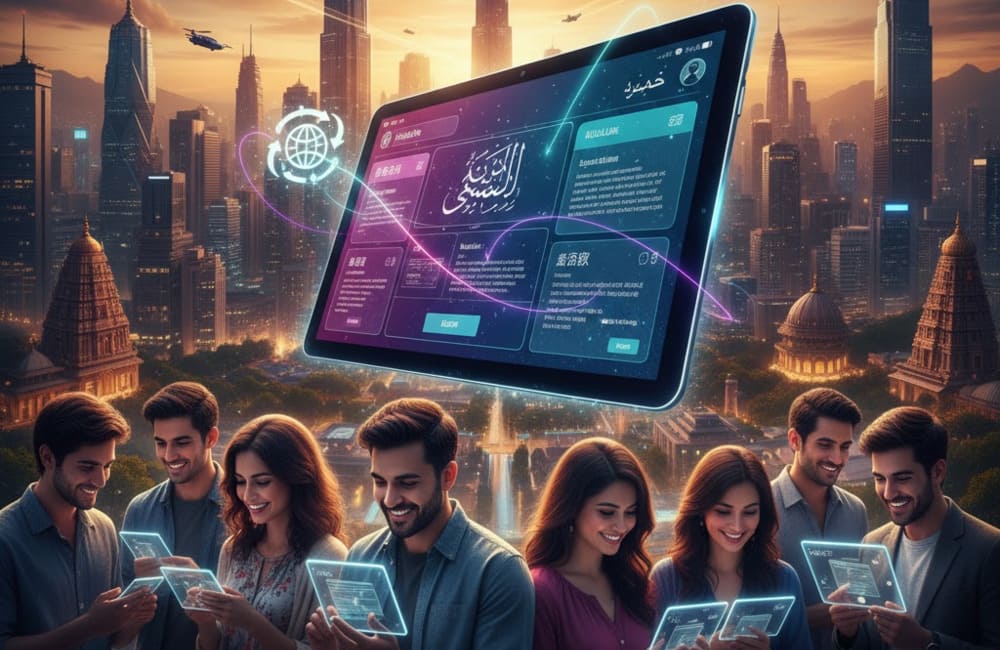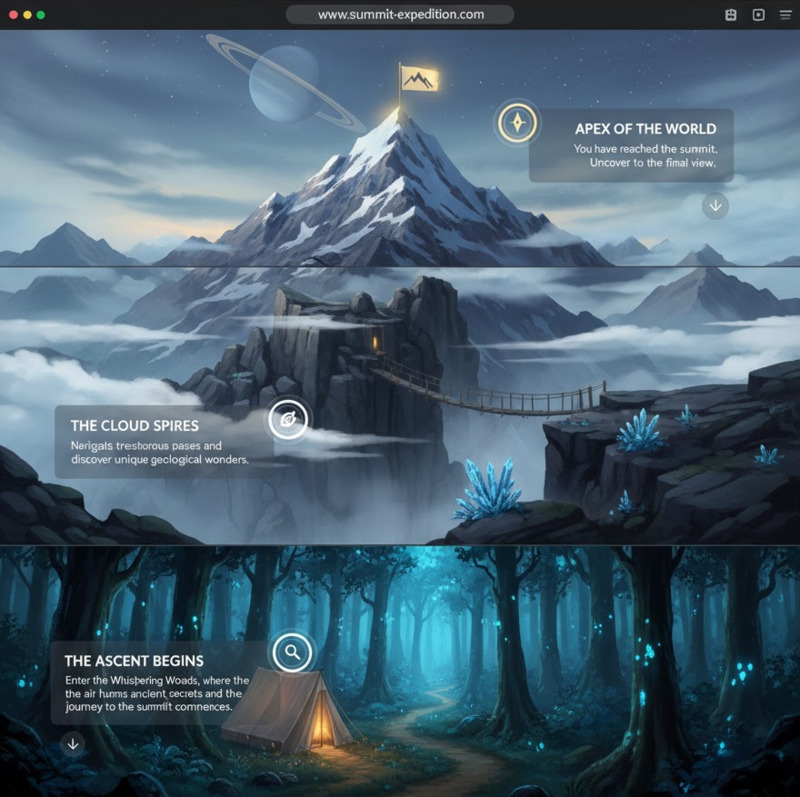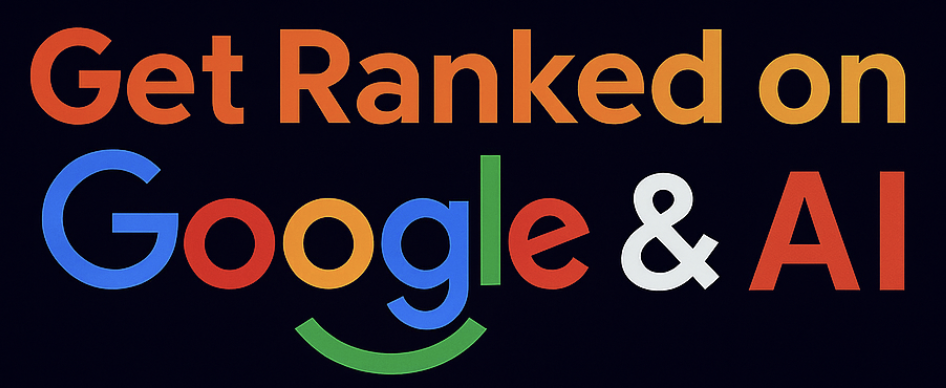Malaysian internet users are mobile-first and demand fast, personalised, and visually appealing websites. Many corporate and B2B sites are still slow and outdated.
To remain competitive by 2026, brands should integrate global design trends like AI and interactive elements with Malaysia’s cultural context, emphasising faster mobile UX and multilingual features that embody “Rasa Malaysia.”
Let’s explore ten website design trends in Malaysia shaping the way businesses connect with audiences grouped into three core themes: Aesthetics & Experience, Technology & Interactivity, and Market & Conversion.
Table of Contents
A. Aesthetics & Experience: How Malaysian Design Finds Its Identity
1. Mobile-First Hyper-Optimisation: The Speed Mandate
Speed has become a design language of its own. Mobile-first design demands every element be optimised for smaller screens and varied network speeds.
Malaysian internet penetration now exceeds 90%, and many users browse on mid-range smartphones with 4G connections.
Designers are focusing on Core Web Vitals, minimal data use, and faster code rendering.
For B2B brands, fast loading pages for spec sheets and product catalogues are critical. A corporate website that opens instantly in a factory or office setting builds confidence from the first click.
See why a phone-first approach pays off in real-world UX in our explainer on mobile first design.
If you’re exploring a revamp, a website development service can help align performance goals with brand aesthetics.
2. Multilingual UX: The Unity Approach

Malaysia’s diversity deserves to be visible online. Multilingual sites are now an essential part of good website design.
Language toggles must be intuitive and visible. Many brands are adopting clean icons or dropdowns for Bahasa Melayu, English, Mandarin, and Tamil, ensuring inclusivity and accuracy instead of auto-translation errors.
Multilingual SEO structure also matters. Here’s where local SEO supports language switching and local discovery.
B2B businesses are going further by offering downloadable contracts and compliance documents in multiple languages to enhance trust. This approach turns localisation into a true business advantage.
3. Modern Brutalism Meets Traditional Motif
Minimalist design is evolving into something bolder. The brutalist design trend, known for visible grid lines and strong geometry, is finding harmony with Malaysia’s traditional patterns such as Batik and Songket textures.
This creates a balance of confidence and warmth, realized through powerful typography and organic cultural gradients.
It’s a new wave of modern website design that feels authentic and rooted in place.
A B2B engineering company, for example, might use bold headers for specifications while weaving traditional textures subtly into its footer background.
This mix brings depth to an otherwise sterile corporate space.
4. Micro-Delights and Subtle Audio UX
The smallest details now define quality. Subtle micro-interactions such as button hovers, hover effects, and animated confirmations, create a feeling of responsiveness.
Short demo clips help teams review motion choices early. If you need assets, our video making toolkit supports rapid UX testing.
Adding light, ambient sound cues for form submissions or completed actions can also improve clarity without overwhelming the user.
Brands see higher completion rates when actions feel acknowledged.
During high-traffic shopping seasons such as Ramadan or Chinese New Year, these touches add emotional connection and memorability. A hallmark of creative websites built with empathy.
B. Technology & Interactivity: When Design Meets Intelligence
5. Conversational and Agentic AI

AI is taking websites beyond simple FAQ bots. In 2026, brands will deploy agentic AI assistants capable of generating quotations, explaining specifications, or summarising case studies directly on-site.
For Malaysian audiences who value friendly communication, these chatbot integration features work best when they sound conversational.
A “Digital Procurement Agent” that helps buyers compare pricing tiers or check stock can replace several manual interactions.
This trend turns a creative website into a responsive assistant available 24 hours a day.
6. Responsive 3D and Spatial Storytelling

Immersive storytelling is one of the latest website design trends.
Lightweight 3D frameworks such as WebGL or React Three Fiber make it possible to display rotating models, dynamic walkthroughs, and interactive design scenes without slowing the page.
A Malaysian property developer or manufacturing firm can use 3D elements to let visitors view a layout or machinery design online where no app required. This type of modern web design demonstrates technical capability while keeping content intuitive.
Even simple animation techniques such as parallax scrolling can transform a plain webpage into an immersive experience that guides the user’s focus naturally.
7. Frictionless Data and Privacy Transparency
Digital trust is now a competitive edge. Businesses are redesigning forms and consent banners for clarity and brevity with fewer fields, clearer labels, and smoother flows.
Modern website design ideas prioritise privacy notices that look friendly rather than intrusive. Malaysia’s PDPA regulations make this even more relevant.
Lifecycle comms that respect consent pair well with thoughtful email marketing flows
One smart approach is using one-click LinkedIn or Google sign-in for demo requests, cutting unnecessary friction while maintaining consent visibility. Clean, respectful UX builds credibility, especially in B2B settings.
C. Market & Conversion: Where Experience Becomes Growth
8. The Rise of Digital Self-Serve Portals
B2B buyers now expect self-service capabilities similar to consumer eCommerce. Custom dashboards, order history, and downloadable invoices all reduce dependency on sales teams.
An optimised client portal represents good website design for the corporate world which could be practical, data-driven, and always available.
This trend aligns with eCommerce design trends that focus on convenience and transparency. Businesses adopting self-serve models report faster conversions and higher repeat engagement.
If you’re weighing platform decisions, compare the best website builders for small business before committing.
9. Flexible Payment Integration and Fintech UX
Malaysia’s growing fintech ecosystem is reshaping checkout experiences. Sites now integrate Touch ’n Go eWallet, GrabPay, and online financing options directly into the payment interface.
Designers are crafting layouts that clearly present invoice terms such as “Net-30” or “Net-60”, removing confusion for high-value transactions.
A visually clean checkout experience achieved through minimalist web design and intuitive flow is becoming standard for modern websites targeting both SMEs and large enterprises.
10. Authenticity, Social Proof, and Local Endorsements
Malaysian buyers rely heavily on trust and peer validation. The best website designs now incorporate real testimonials, project photos, and case studies within product or service pages.
A structured grid layout with local client logos and industry awards tells a story of credibility. Showing real names and faces even quotes in multiple languages will deepen authenticity.
If you’d like examples of effective storytelling and layout balance, browse the Newnormz Portfolio for design inspiration rooted in Malaysian business culture.
Still choosing a build path? Read custom vs template website Malaysia to pick the right foundation.
Redefining the Future of Website Design in Malaysia
The top web design trends for 2026 go beyond beauty. They focus on performance, trust, and cultural connection.
Malaysia’s next generation of best websites will merge technology with emotion, blending AI, 3D storytelling, and multilingual UX into experiences that feel both global and personal.
A beautiful website is one that communicates clarity, builds confidence, and adapts effortlessly.
If your site no longer reflects your brand’s vision, it might be time to evaluate its speed, inclusivity, and engagement.
Get in touch with Newnormz to begin shaping your next digital milestone.






